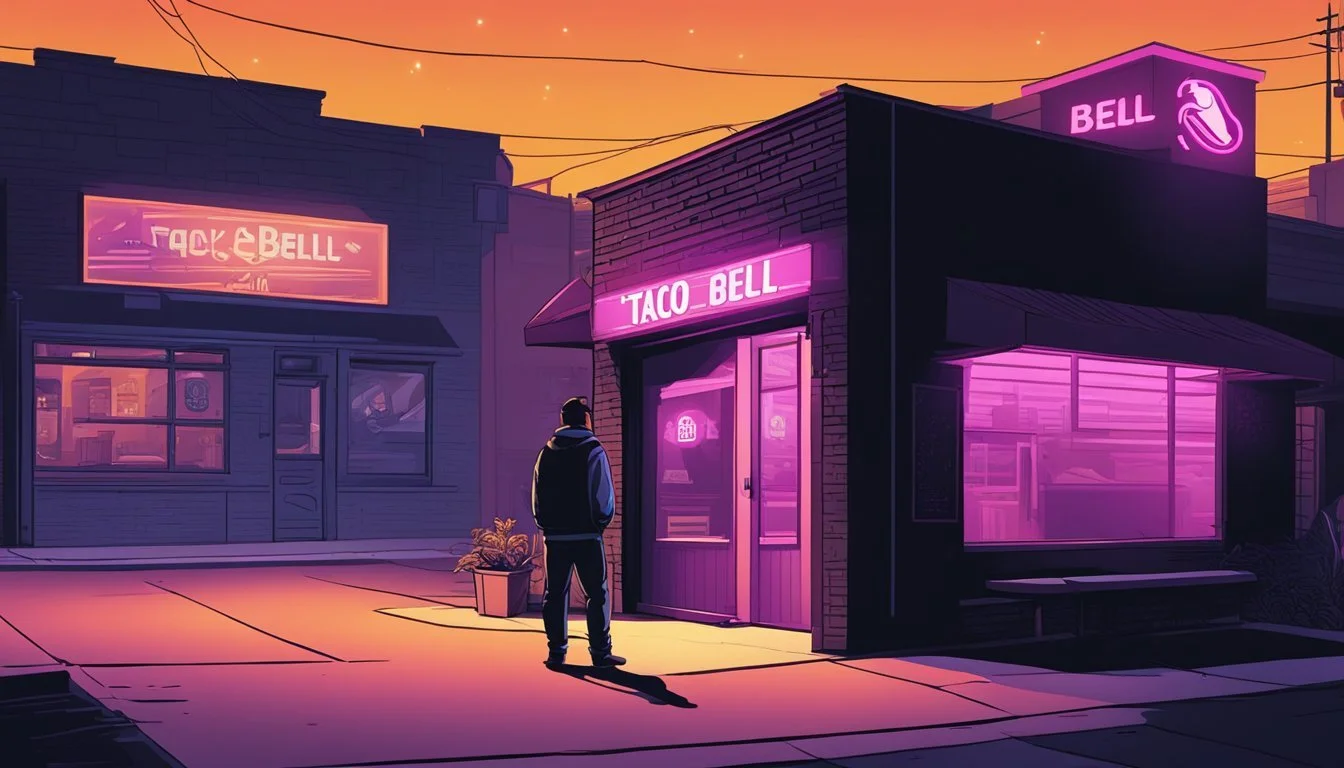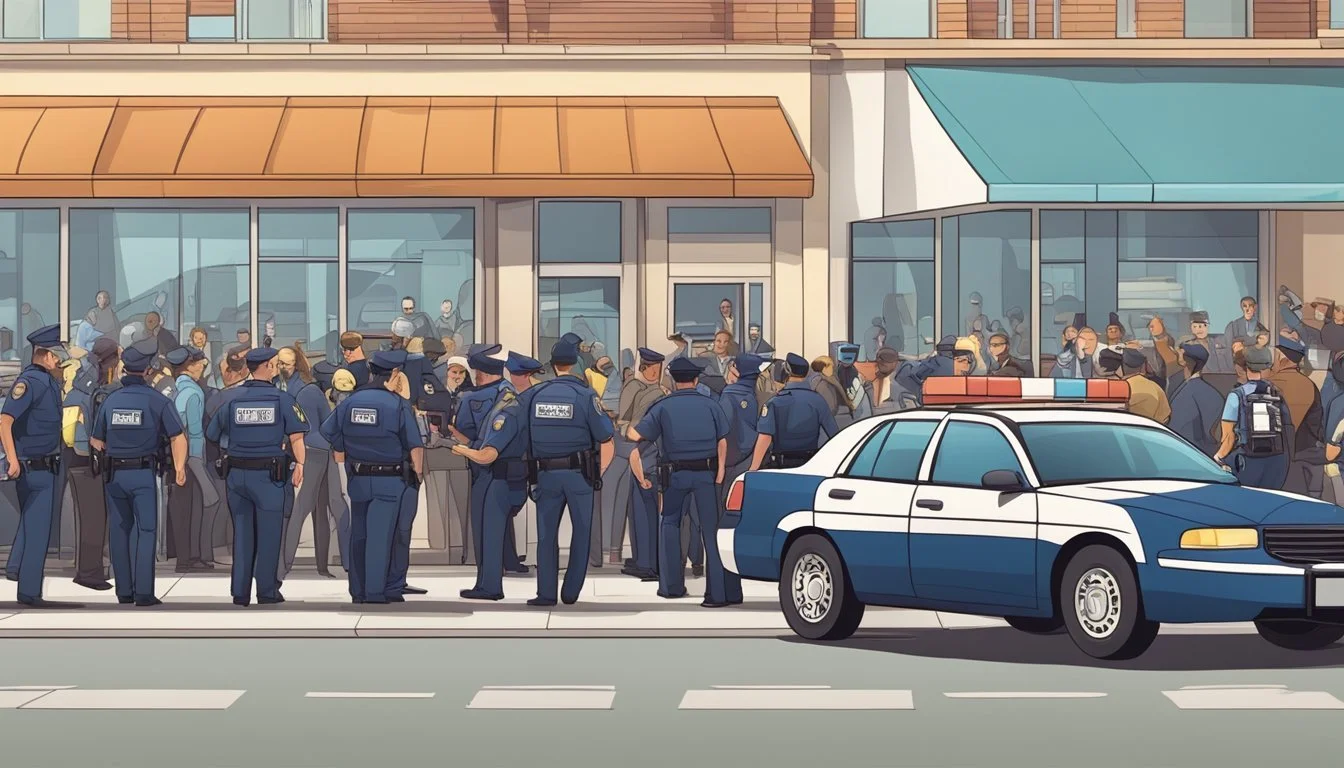Henry Louis Wallace's Fast Food Finale: Taco Bell Strangler Executed in North Carolina
Henry Louis Wallace, infamously known as the "Taco Bell Strangler," terrorized Charlotte, North Carolina in the early 1990s. His reign of terror left at least 11 young women dead, most of whom he met through his employment at fast-food restaurants. Wallace's friendly demeanor and gentle nature masked a sinister predator fueled by drug abuse and a deep-seated rage against women.
Wallace's capture in 1994 brought an end to a two-year period of fear and uncertainty in Charlotte's African American community. His victims were primarily young Black women between the ages of 17 and 35, many of whom worked in the fast-food industry alongside him. Wallace's ability to gain trust through his workplace connections allowed him to evade suspicion for an extended period.
The Taco Bell Strangler's crimes highlighted the vulnerability of young women working in the fast-food industry and sparked discussions about workplace safety. Wallace's case also raised questions about law enforcement's response to crimes against marginalized communities, as some critics argued that the investigation was initially slow to recognize the pattern of killings.
Profile of Henry Louis Wallace
Henry Louis Wallace, born on November 4, 1965, in Barnwell, South Carolina, became notorious as the "Taco Bell Strangler" for his string of murders in the early 1990s. His criminal activities spanned across South Carolina and North Carolina.
Early Life and Background
Wallace grew up in Barnwell, South Carolina. He attended Barnwell High School, where he was known as a charming and popular student. Despite his outward appearance, Wallace's childhood was marked by challenges. He was raised primarily by his grandmother, as his mother worked long hours to support the family.
Wallace showed early signs of troubling behavior. He began experimenting with drugs and alcohol in his teenage years. This substance abuse would later play a significant role in his criminal activities.
Military Service and Employment
After high school, Wallace joined the U.S. Navy in 1985. He served for several years before being honorably discharged. His time in the military was largely unremarkable.
Following his discharge, Wallace struggled to maintain steady employment. He worked various jobs, including positions at fast food restaurants. These jobs would later become significant in his criminal activities.
Wallace's employment at Taco Bell in Charlotte, North Carolina, earned him the moniker "The Taco Bell Strangler."
Portrait of a Serial Killer
Wallace's killing spree began in 1990 with the murder of Tashonda Bethea in Barnwell, South Carolina. He then moved to Charlotte, North Carolina, where he committed most of his known murders between 1992 and 1994.
His victims were primarily young African American women, many of whom he knew personally or through work. Wallace's modus operandi typically involved strangulation.
He often targeted coworkers or acquaintances from fast food restaurants where he worked. Wallace's crimes went undetected for years due to his charm and ability to maintain a seemingly normal life.
Law enforcement finally apprehended Wallace on March 12, 1994. He confessed to killing 11 women across both states. Wallace's case highlighted issues in police investigations and community relations in Charlotte during that period.
Timeline of Crimes
Henry Louis Wallace's murder spree spanned from 1990 to 1994, primarily targeting young African American women in Charlotte, North Carolina. His crimes escalated over time, becoming more frequent and brazen until his eventual capture.
First Known Murder
Wallace's first documented murder occurred in 1990 in his hometown of Barnwell, South Carolina. He strangled Tashonda Bethea, a 17-year-old acquaintance. Her body was discovered in a pond two months later. This initial crime went unsolved for years, allowing Wallace to continue his killing spree undetected.
The Killing Spree in Charlotte
Wallace moved to Charlotte in 1992, where his murders intensified. He targeted women he knew through work or social connections. His victims included:
Sharon Nance (1992)
Caroline Love (1993)
Shawna Hawk (1993)
Audrey Spain (1994)
Valencia Jumper (1994)
Michelle Stinson (1994)
Wallace often gained entry to victims' homes through manipulation or force. He sexually assaulted many victims before strangling them. His connection to fast food restaurants, particularly Taco Bell, earned him the moniker "Taco Bell Strangler."
Capture and Arrest
Wallace's crime spree ended on March 13, 1994. He murdered three women in a 48-hour period:
Vanessa Mack
Betty Jean Baucom
Brandi June Henderson
This rapid succession of murders finally led to his capture. Police arrested Wallace on March 13, 1994. During interrogation, he confessed to 10 murders in Charlotte. DNA evidence and his detailed confessions provided overwhelming proof of his guilt. Wallace's arrest brought relief to the Charlotte community after years of fear and uncertainty.
Victims and Their Stories
Henry Louis Wallace's reign of terror in Charlotte claimed the lives of at least 11 young women. His victims were predominantly young Black women who worked in fast food restaurants or lived in his neighborhood. Each life cut short left a devastating impact on families and the community.
Shawna Denise Hawk
Shawna Denise Hawk, 20, worked at Taco Bell with Wallace. On February 19, 1993, Wallace strangled her in her bathtub. Hawk was a hardworking student at Central Piedmont Community College. She dreamed of becoming a paralegal.
Her mother found her body when Shawna didn't show up for work. The brutal murder shocked the community and left Shawna's family devastated.
Vanessa Little Mack
Vanessa Little Mack, 25, was killed on February 20, 1994. Wallace strangled her in her apartment while her young children were present. Mack was a dedicated single mother working to provide for her family.
Her children were found unharmed but traumatized. Mack's murder highlighted Wallace's ruthlessness and the vulnerability of young mothers.
Betty Jean Baucom
Betty Jean Baucom, 24, lost her life on March 10, 1994. Wallace attacked her in her apartment, strangling her with a towel. Baucom worked at Taco Bell and knew Wallace as a co-worker.
Her murder occurred just days before Wallace's capture. Baucom's death underscored the urgency to apprehend the killer terrorizing Charlotte's community.
Other Tragic Losses
Wallace's other victims included Caroline Love, Valencia Jumper, and Michelle Stinson. Love, 20, was Wallace's first known victim in 1992. Jumper, 21, was killed in August 1993. Stinson, 20, was murdered in September 1993 while her young son was in the apartment.
Sharon Nance and Audrey Spain were also among Wallace's victims. Each woman had hopes, dreams, and families left to mourn their untimely deaths.
The murders shared similar patterns:
Young Black women
Victims strangled
Many worked in fast food
Some knew Wallace personally
These tragic losses devastated Charlotte's community and exposed systemic issues in how crimes against young Black women were investigated.
The Investigation
The investigation into Henry Louis Wallace's crimes spanned several years and involved multiple law enforcement agencies. DNA evidence, interrogation techniques, and confessions played crucial roles in ultimately bringing the serial killer to justice.
Initial Challenges
The Charlotte-Mecklenburg Police Department faced significant hurdles in the early stages of the investigation. Wallace's victims were primarily young African American women, and their disappearances initially received limited attention from authorities and media.
Investigators struggled to connect the seemingly unrelated murders. Wallace's employment at various fast-food restaurants allowed him to move between different locations, making it difficult to establish a pattern.
The lack of physical evidence at crime scenes further complicated efforts to identify a suspect. Wallace often targeted acquaintances, leaving few signs of forced entry or struggle.
Breakthroughs and Evidence
A major breakthrough came when investigators noticed similarities in the victims' backgrounds and circumstances of their deaths. Several victims had worked with Wallace at fast-food establishments, particularly Taco Bell.
DNA analysis played a crucial role in linking Wallace to multiple crime scenes. Forensic experts matched genetic material found on victims to Wallace's DNA profile.
Surveillance footage from locations near the crime scenes provided visual evidence of Wallace's movements. This helped investigators piece together his activities on the nights of several murders.
Law Enforcement Tactics
The Charlotte-Mecklenburg Police Department formed a task force dedicated to solving the string of murders. They increased patrols in areas where victims had been found and conducted extensive interviews with friends and family members of the deceased.
Investigators employed strategic interrogation techniques when questioning Wallace. They confronted him with physical evidence and inconsistencies in his statements, gradually breaking down his defenses.
Detectives also leveraged Wallace's personal relationships, using information from his acquaintances to build a stronger case. This approach ultimately led to Wallace's confession to multiple murders.
The police department collaborated with federal agencies to expand their resources and access additional forensic tools. This cooperation proved instrumental in gathering and analyzing evidence across multiple jurisdictions.
Trial and Sentencing
Henry Louis Wallace faced justice in a high-profile trial that captivated public attention. The proceedings revealed shocking details of his crimes and led to multiple death sentences.
Court Proceedings
Wallace's trial began in September 1996 in Mecklenburg County, North Carolina. He faced nine murder charges for his killing spree in Charlotte. The courtroom was tense as prosecutors presented evidence linking Wallace to the victims.
Witnesses provided emotional testimony, recounting their interactions with Wallace and the devastating impact of his crimes. DNA evidence and Wallace's own confessions formed key parts of the prosecution's case.
The trial lasted several months, with the jury hearing graphic details of the murders. Wallace's criminal history was also presented, showing a pattern of escalating violence.
Defense and Prosecution
Wallace's defense team faced an uphill battle due to the overwhelming evidence against him. They attempted to portray Wallace as a troubled individual with a history of substance abuse and mental health issues.
The prosecution painted a different picture, describing Wallace as a calculated killer who targeted vulnerable women. They emphasized the brutality of his crimes and the fear he instilled in the community.
Key arguments focused on Wallace's state of mind during the murders and his capacity to stand trial. Expert witnesses testified about his mental condition and its potential influence on his actions.
Death Penalty Deliberations
After finding Wallace guilty, the jury moved to the sentencing phase. They had to decide whether to recommend life imprisonment or the death penalty.
Prosecutors argued for capital punishment, citing the heinous nature of Wallace's crimes and the need for justice for the victims' families. They presented impact statements from bereaved relatives, highlighting the lasting trauma caused by Wallace's actions.
The defense team pleaded for mercy, citing Wallace's troubled background and potential for rehabilitation. They urged the jury to consider life imprisonment as an alternative to execution.
After careful deliberation, the jury recommended the death penalty. On January 29, 1997, the judge sentenced Henry Louis Wallace to death for each of the nine murder convictions.
Cultural and Social Impact
Henry Louis Wallace's crimes profoundly affected Charlotte's community, particularly young African American women. His case sparked intense media coverage, galvanized victim advocacy groups, and left a lasting imprint on true crime narratives.
Media Coverage and True Crime
Wallace's murders received extensive local and national attention. News outlets like "20/20" featured in-depth reports on the case. True crime documentaries explored the chilling details of his crimes and the investigation that led to his capture.
These productions often highlighted the vulnerabilities of young women working late-night shifts in fast food restaurants. The moniker "Taco Bell Strangler" became synonymous with Wallace in media portrayals, cementing his notoriety in true crime circles.
Community Response
Charlotte residents, especially in the East side, experienced fear and distrust during Wallace's killing spree. The murders exposed racial disparities in law enforcement responses and media coverage of missing persons cases.
In response, community groups formed to support victims' families and raise awareness. Mothers of Murdered Offspring, founded by families affected by Wallace's crimes, became a powerful voice for victim advocacy in Charlotte.
The organization continues to provide support for grieving families and works to prevent violence in the community.
Legacy of the Victims
Wallace's victims were primarily young African American women. Their stories highlighted the dangers faced by vulnerable workers in late-night service jobs.
Memorials and scholarships were established in honor of several victims. These initiatives aim to preserve their memory and create positive change from tragedy.
The case led to increased security measures in fast food restaurants and sparked discussions about workplace safety, particularly for women working night shifts.
Post-Conviction
Henry Louis Wallace's saga continued long after his trial ended. His time on death row, ongoing legal battles, and the impact on victims' families shaped the aftermath of his case.
Death Row Incarceration
Wallace entered North Carolina's Central Prison in Raleigh following his 1997 conviction. He was placed in a single cell on death row, spending 23 hours a day in isolation. Prison guards monitored him closely due to his notoriety.
Wallace developed a routine of reading, writing letters, and exercising in his cell. He had limited contact with other inmates during his one hour of daily recreation. A prison nurse regularly checked his health.
Despite the harsh conditions, Wallace avoided major disciplinary issues during his incarceration. He occasionally received visits from family members, though these became less frequent over time.
Appeals and Legal Proceedings
Wallace's legal team filed multiple appeals in state and federal courts. They challenged aspects of his trial, including jury selection and evidence admissibility. His attorneys argued that Wallace's confession was coerced and that he received ineffective counsel.
In 2005, the North Carolina Supreme Court rejected Wallace's appeal for a new trial. Federal courts later denied his habeas corpus petitions. Wallace's lawyers continued to file motions, citing new evidence and constitutional concerns.
The appeals process stretched on for years, frustrating victims' families who sought closure. Prosecutors maintained that the convictions were sound and opposed all appeals.
Reflections on Justice
Wallace's case prompted discussions about the legal system's handling of serial killers. Victims' advocates praised the death sentence as appropriate for his crimes. Some questioned why Wallace wasn't caught sooner, given his pattern of violence.
Law enforcement officials used lessons from the case to improve investigative techniques. They emphasized the importance of better communication between police departments to identify serial offenders quickly.
The prolonged appeals process sparked debate about the balance between justice and closure for victims' families. Some supported thorough reviews to ensure fair trials, while others saw the delays as unnecessarily painful for those affected by Wallace's crimes.



